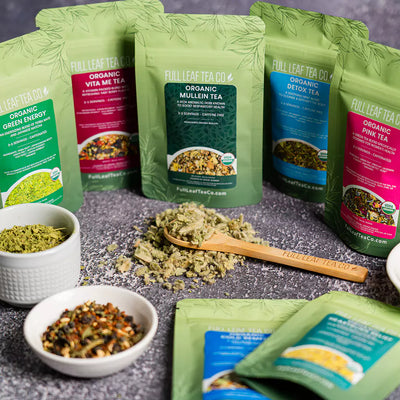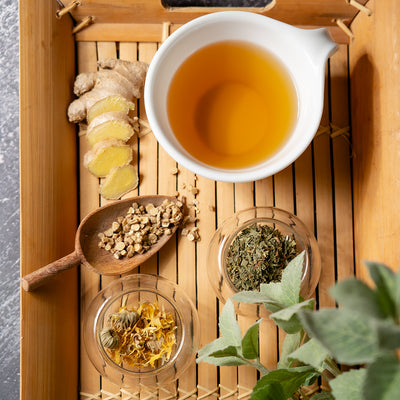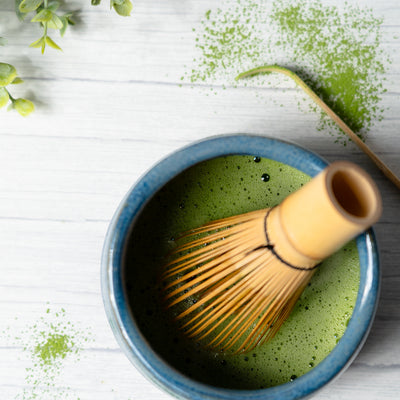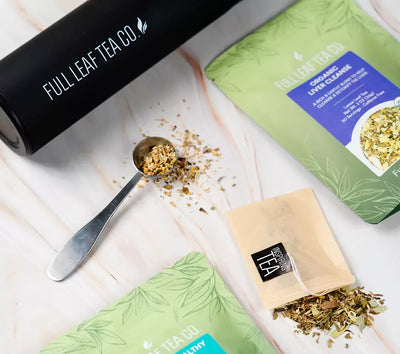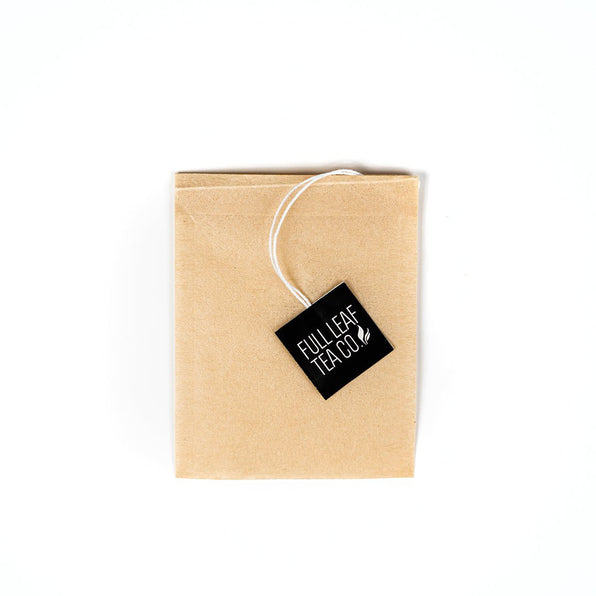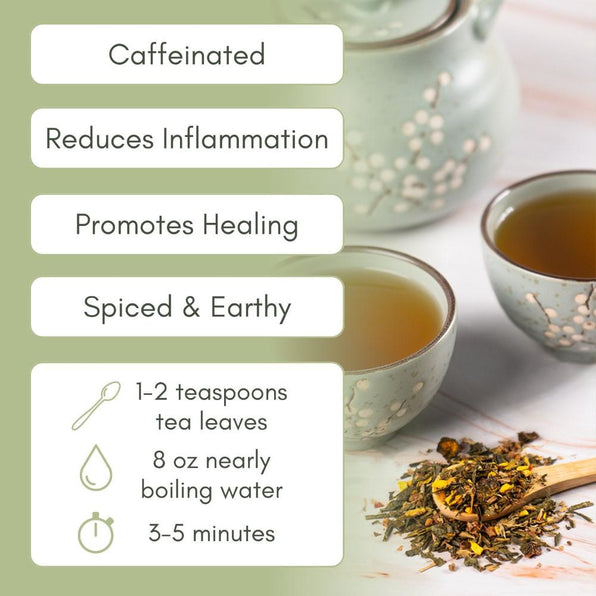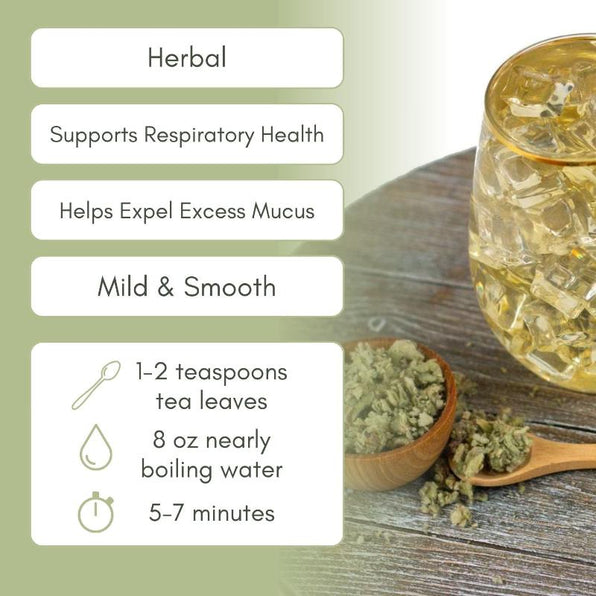A Tale of Two Mints: Spearmint and Peppermint Compared
Mint lovers, rejoice! When it comes to adding refreshing flavor and natural health benefits to your tea, spearmint and peppermint are two of the most beloved herbs. While they both come from the mint family and share many similarities, there are some key differences that affect their flavor, aroma, and how they support your health. Whether you're deciding which mint is best for your daily cup or just curious about how they compare, this guide breaks down everything you need to know.
Subtle Sweetness vs. Bold Coolness
One of the most noticeable differences between spearmint and peppermint is their flavor profile.
Spearmint has a naturally sweet, mild, and slightly fruity flavor with a softer menthol presence. It offers a more subtle minty aroma that’s gentle on the senses, making it perfect for those who prefer a smoother, less intense mint experience.
Peppermint , on the other hand, has a much stronger, sharper flavor with a pronounced menthol kick. It delivers a bold, cooling sensation and a brisk aroma that invigorates the senses. This intensity makes peppermint a go-to for powerful, refreshing teas—especially in blends designed to relieve discomfort or awaken the mind.
Visual Differences
While spearmint and peppermint may look similar at first glance, there are a few key visual differences that set them apart. Spearmint typically has bright green, lance-shaped leaves with serrated edges and a softer, more delicate texture. Its stems are usually green and its overall appearance is lighter and more relaxed.
In contrast, peppermint has darker green leaves that are often slightly purple-tinged, with a more textured, crinkled surface. The stems of peppermint tend to have a reddish or purplish hue, and the plant has a denser, more robust look. These differences are subtle but noticeable once you know what to look for, especially if you're growing or identifying fresh mint at home.

Health Benefits: Soothing vs. Stimulating
While both mints have overlapping benefits, they also offer unique properties:
Spearmint is known for its calming and hormone-balancing effects. It has been studied for its ability to reduce symptoms of hormonal imbalances, including in women with PCOS (Polycystic Ovary Syndrome) (Akdogan et al., 2007). Spearmint also supports digestion and may help reduce stress, thanks to its naturally lower menthol content.

Peppermint is often used to relieve headaches, nausea, indigestion, and muscle tension. Its higher menthol content provides a cooling effect that soothes pain and supports respiratory health (Kennedy et al., 2011). Peppermint is also widely recognized for its ability to relieve bloating and IBS symptoms (Ford et al., 2008).

Teas That Highlight Spearmint
If you're drawn to the sweet and soothing nature of spearmint, you’ll love its inclusion in several of our most refreshing blends.
Organic Detox Tea: This herbal favorite combines spearmint with holy basil, rose hips, and more to gently support your body's natural detox process. Spearmint adds a clean, cooling note that balances out the earthy herbs.
Organic Mint Cocoa Pu-Erh: A decadent blend of rich pu-erh, cocoa nibs, and spearmint, this tea offers a dessert-like experience without the sugar. The spearmint brings lightness to the bold, earthy base.
Teas That Feature Peppermint
For those who love the energizing, cooling power of peppermint, these blends are standouts:
Organic Vertigo Relief: Formulated to help reduce dizziness and nausea, this blend combines peppermint with gingko, ginger, and other herbs that support circulation and focus.
Organic Winter Brew: A cozy seasonal blend that uses peppermint to add a crisp finish to warming spices and sweet rooibos tea. It’s the perfect balance of invigorating and comforting.
Other Herbs in the Mint Family
Spearmint and peppermint aren’t the only stars of the mint family (Lamiaceae). This fragrant plant family includes a wide variety of herbs commonly found in both culinary and wellness teas. Some popular mint relatives include:
Lemon Balm – Known for its light lemony scent and calming effects, lemon balm is often used to ease stress and support sleep.
Holy Basil (Tulsi) – A powerful adaptogen with a spicy, slightly clove-like flavor, holy basil helps the body manage stress and promotes overall wellness.
Sage – Earthy and aromatic, sage is often used for digestive support and respiratory health.
Thyme – A savory herb with antimicrobial properties, thyme is often used in teas for coughs and sore throats.
When to Choose Spearmint vs. Peppermint
Choose Spearmint if you want a gentler, sweeter flavor that supports digestion, reduces stress, or helps with hormonal balance.
Choose Peppermint when you're looking for strong flavor, respiratory relief, or natural headache support.
Choose Both when you want a dynamic mint blend that’s both invigorating and soothing.
Teas That Blend Both Spearmint and Peppermint
When you can’t decide between the two, why not enjoy the best of both worlds? These teas offer a layered minty experience using both spearmint and peppermint:
Organic Mint Bliss
As the name suggests, this tea is pure minty goodness. Spearmint and peppermint combine for a clean, refreshing, and relaxing brew that’s great hot or iced.
Organic Northwest Sunset
This caffeine-free blend combines mints with flavorful ingredients like hibiscus and lemon verbena. It’s ideal for winding down in the evening with a serene flavor profile.
Conclusion: A Mint for Every Mood
Spearmint and peppermint may come from the same family, but each brings something unique to your cup. Whether you're after calm and balance or energy and clarity, there’s a mint—and a minty tea—made just for you. From sweet spearmint infusions to bold peppermint blends and everything in between, Full Leaf Tea Company has you covered with premium loose leaf teas that highlight the best of both herbs.

